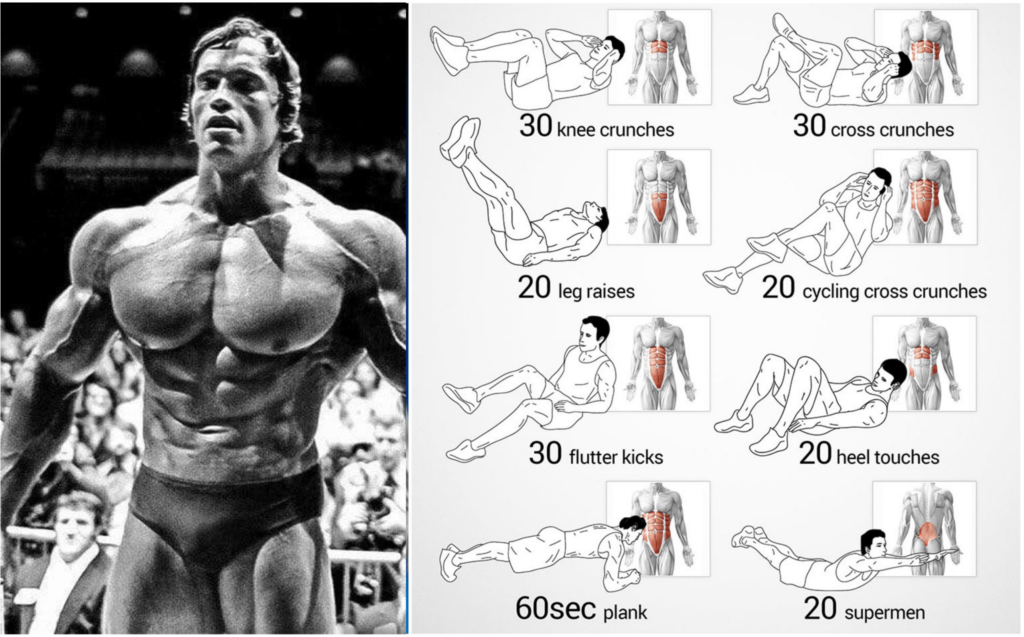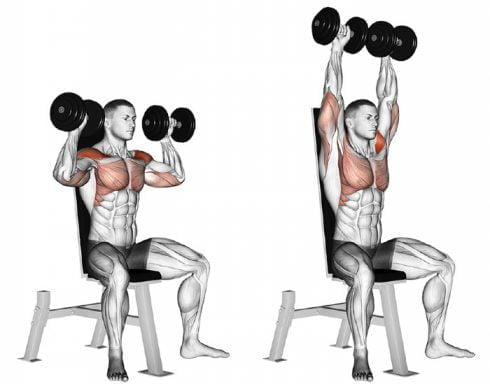Introduction
In this article, we’ll explore the topics; Beginner’s Strength Training Guide, Basic Strength Training Exercises, Resistance Training Techniques, and other important topics.
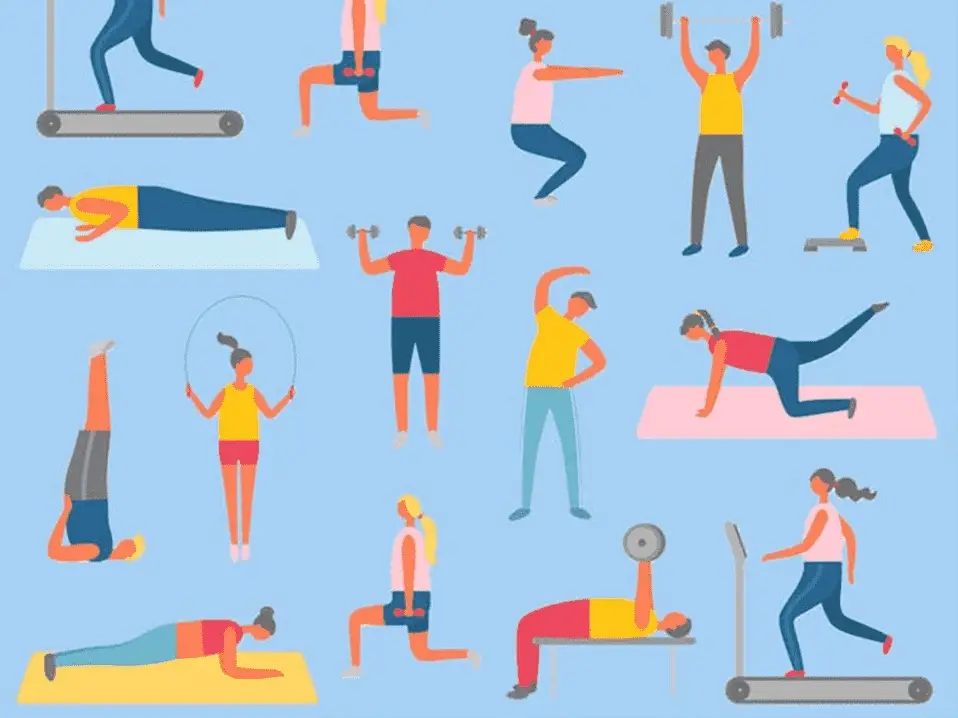
Strength training is a type of exercise that involves using resistance, such as weights or resistance bands, to build and strengthen muscles. There are many benefits to strength training, including:
- Increased muscle strength and endurance
- Improved body composition (i.e. increased muscle mass and decreased body fat)
- Enhanced bone density and joint health
- Reduced risk of chronic diseases such as heart disease, diabetes, and osteoporosis
- Improved mental health and cognitive function
- Increased metabolism and energy expenditure
Despite these benefits, there are still many misconceptions about strength training that may discourage some people from trying it. One common misconception is that strength training is only for bodybuilders or athletes. However, strength training can be beneficial for people of all ages and fitness levels, including beginners.
Another misconception is that strength training will make you bulky or “too muscular.” However, this is not necessarily true. The amount of muscle mass you gain from strength training depends on a variety of factors, including your genetics, diet, and training regimen.
It’s important to note that proper form and technique are crucial when performing strength training exercises. Using improper form can increase the risk of injury and may prevent you from achieving your goals. Beginners should take the time to learn proper form and technique before attempting heavier weights or more advanced exercises.
Getting Started
I. Setting Realistic Goals
Before you start strength training, it’s important to set realistic goals that will help you stay motivated and track your progress. Goals should be specific, measurable, achievable, relevant, and time-bound (SMART). For example, a SMART goal might be “to squat 100 pounds by the end of 12 weeks.” Setting realistic goals helps you stay focused, work towards something achievable, and allows you to track your progress over time.
II. Choosing a Program that Suits Your Needs
Choosing the right strength training program is crucial to achieving your goals. There are many different types of strength training programs, including full-body, upper/lower split, and body-part split. When choosing a program, consider your goals, fitness level, and time availability. Beginners may want to start with a full-body program that works for all major muscle groups at once, while more advanced lifters may benefit from a split program that targets specific muscle groups more intensely. Additionally, consider your schedule and how many days per week you can realistically commit to training.
III. Selecting the Right Equipment and Attire
Selecting the right equipment and attire can make your strength training experience more comfortable and effective. Equipment might include dumbbells, barbells, resistance bands, and weight machines. As a beginner, you may want to start with lighter weights and basic equipment to get comfortable with the movements before progressing. Additionally, selecting the right attire, such as comfortable and supportive shoes, can help prevent injury and make your workout more comfortable.
IV. Warm-up and Stretching Exercises
Before starting your strength training workout, it’s important to perform a proper warm-up and stretching routine to help prevent injury and prepare your muscles for the workout. A warm-up might include light cardio exercises like jogging, jumping jacks, or cycling to get your heart rate up and blood flowing to your muscles. After the warm-up, perform dynamic stretches such as leg swings, lunges, and arm circles to improve your range of motion and get your muscles ready for the workout. Avoid static stretching before strength training as it can temporarily weaken the muscles and reduce performance.

By taking the time to set realistic goals, choosing a suitable program, selecting the right equipment and attire, and performing proper warm-up and stretching exercises, beginners can lay a solid foundation for a successful and effective strength training routine.
Basic Strength Training Exercises
Strength training exercises are the foundation of building strength and muscle mass. Here are some of the most fundamental compound exercises that are great for beginners:
Squats
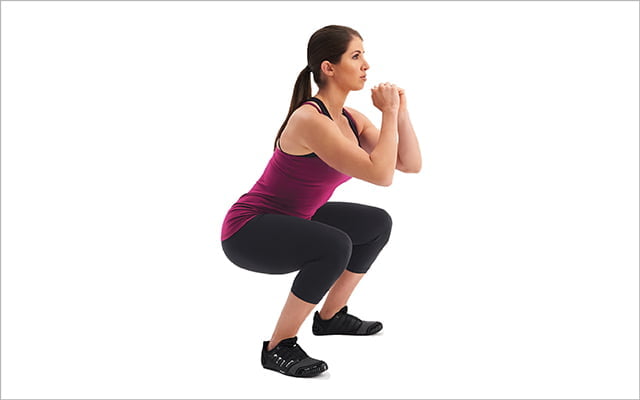
Squats are one of the best exercises for building lower body strength. They primarily target the quadriceps, glutes, and hamstrings.
Here’s how to perform a squat correctly:
- Stand with your feet shoulder-width apart and your toes pointing slightly outward.
- Place a barbell across your upper back, or hold a dumbbell in each hand.
- Lower your body by bending your knees and hips, keeping your back straight and your chest up.
- Lower yourself until your thighs are parallel to the ground.
- Push through your heels to return to the starting position.
Common mistakes to avoid when performing squats include:
- Allowing your knees to cave inward
- Leaning too far forward or back
- Not squatting low enough
- Failing to maintain a neutral spine
To progress to heavier weights, try increasing the weight of your barbell or dumbbells, or performing more sets and reps.
Deadlifts

Deadlifts are another excellent compound exercise that targets the glutes, hamstrings, and lower back.
Here’s how to perform a deadlift correctly:
- Stand with your feet shoulder-width apart, with the barbell on the ground in front of you.
- Bend your knees and hips to lower your body and grasp the bar with an overhand or mixed grip.
- Keep your back straight and your chest up as you lift the bar, pushing through your heels and engaging your glutes and hamstrings.
- Lower the bar back to the ground by bending your knees and hips.
Common mistakes to avoid when performing deadlifts include:
- Rounding your back
- Lifting with your arms instead of your legs
- Starting with the bar too far away from your body
- Not engaging your core muscles
To progress to heavier weights, try increasing the weight of your barbell, or performing more sets and reps.
Bench Press
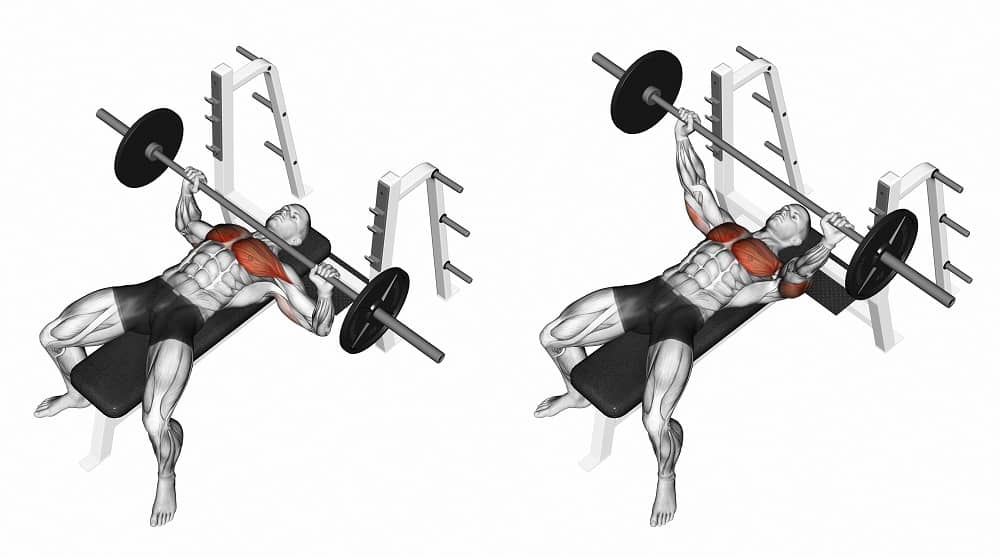
The bench press is a classic upper-body exercise that targets the chest, shoulders, and triceps.
Here’s how to perform a bench press correctly:
- Lie on a bench with your feet flat on the ground and your hands gripping the barbell slightly wider than shoulder-width apart.
- Unrack the bar and lower it slowly towards your chest, keeping your elbows tucked in.
- Push the bar back up to the starting position.
Common mistakes to avoid when performing bench press include:
- Arching your back too much
- Flaring your elbows out too wide
- Lifting your hips off the bench
- Failing to maintain proper form throughout the exercise
To progress to heavier weights, try increasing the weight of your barbell, or performing more sets and reps.
Rows
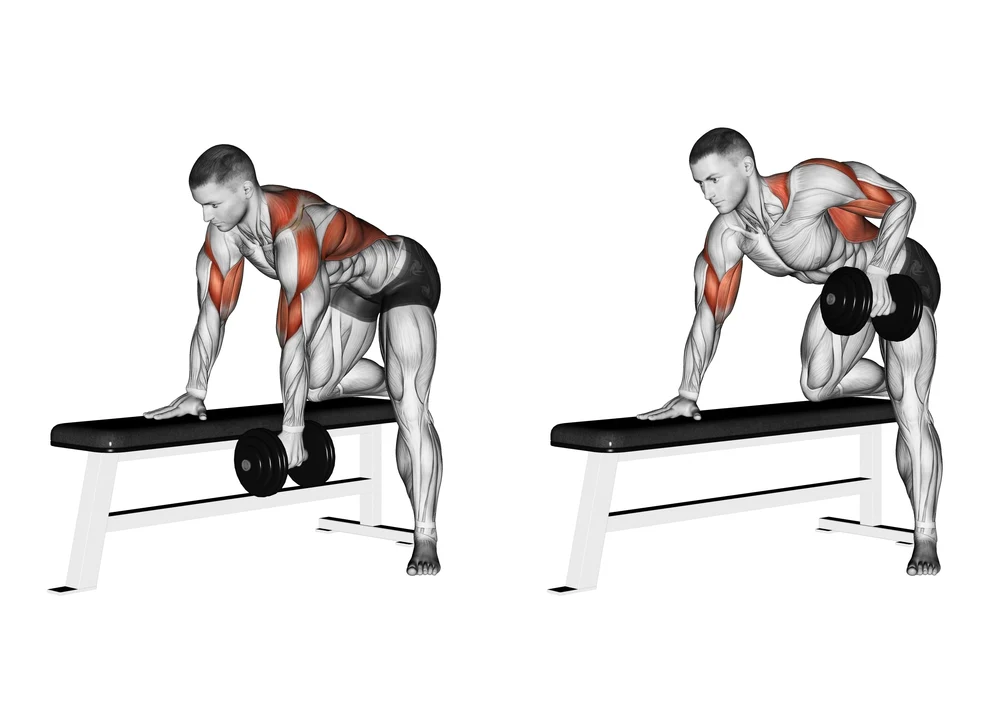
Rows are a great exercise for building upper back and bicep strength.
Here’s how to perform a row correctly:
- Stand with your feet shoulder-width apart and your knees slightly bent, holding a dumbbell in each hand.
- Bend forward at the waist and extend your arms towards the floor.
- Pull the dumbbells up towards your ribcage, squeezing your shoulder blades together.
- Lower the dumbbells back to the starting position.
Common mistakes to avoid when performing rows include:
- Rounding your back
- Using too much momentum to lift the weights
- Letting your shoulders shrug up towards your ears
- Failing to maintain proper form throughout the exercise
To progress to heavier weights, try increasing the weight of your dumbbells, or performing more sets and reps.
Overhead Press
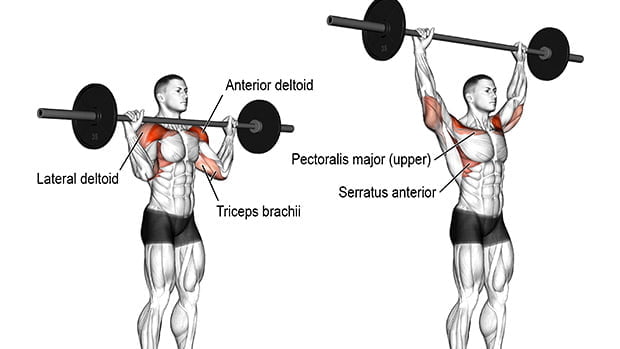
The overhead press is an excellent exercise for building shoulder and upper back strength.
Here’s how to perform an overhead press correctly:
- Stand with your feet shoulder-width apart, holding a barbell or dumbbell at shoulder height with your elbows bent and palms facing forward.
- Push the weight up and overhead, fully extending your arms.
- Lower the weight back down to shoulder height.
Common mistakes to avoid when performing an overhead press include:
- Leaning too far back or forward
- Using your back instead of your shoulders to lift the weight
- Failing to fully extend your arms at the top of the lift
- Not engaging your core muscles
To progress to heavier weights, try increasing the weight of your barbell or dumbbells, or performing more sets and reps.
Lunges

Lunges are a great exercise for building lower body strength and improving balance.
Here’s how to perform a lunge correctly:
- Stand with your feet hip-width apart, holding a dumbbell in each hand.
- Step forward with your right foot and lower your body until your right thigh is parallel to the ground, keeping your back straight and your chest up.
- Push back up to the starting position and repeat with your left leg.
Common mistakes to avoid when performing lunges include:
- Letting your knees cave inward
- Failing to maintain proper form throughout the exercise
- Leaning too far forward or back
- Not stepping forward far enough
To progress to heavier weights, try increasing the weight of your dumbbells, or performing more sets and reps.
Pull-Ups
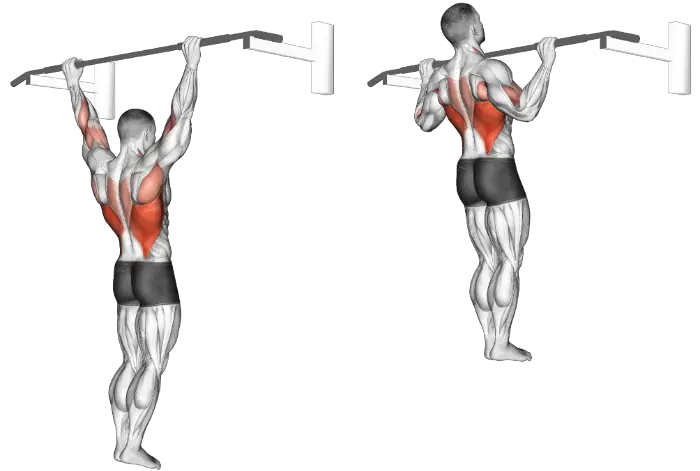
Pull-ups are a challenging exercise that can help build upper body strength and improve grip strength.
Here’s how to perform a pull-up correctly:
- Hang from a pull-up bar with your hands slightly wider than shoulder-width apart, palms facing away from you.
- Pull your body up towards the bar, keeping your elbows tucked in and your shoulders down.
- Lower your body back down to the starting position.
Common mistakes to avoid when performing pull-ups include:
- Swinging your body to gain momentum
- Failing to fully extend your arms at the bottom of the lift
- Using your neck or shoulders to lift your body instead of your back and arms
- Not engaging your core muscles
To progress to more reps or more challenging variations of pull-ups, try adding weight or using a resistance band for assistance.
Resistance Training Techniques
Resistance training techniques are variations of traditional strength training exercises that can help to increase the intensity of your workout and challenge your muscles in new ways. By varying the weight, repetitions, rest periods, and order of exercises, these techniques can help to break through plateaus and stimulate muscle growth. Some common techniques include:
- Drop Sets: This technique involves performing a set of an exercise with a certain weight until muscle fatigue is reached, then immediately dropping the weight and doing another set without rest. This can be repeated for several “drops” until the muscle is completely fatigued. Drop sets help to increase muscle fiber recruitment and metabolic stress, which can lead to increased muscle growth and endurance.
- Supersets: This technique involves performing two exercises back-to-back without rest. The exercises can target the same muscle group or different ones, depending on your goals. Supersets help to increase the intensity of your workout, improve cardiovascular endurance, and save time in the gym.
- Pyramid Sets: This technique involves gradually increasing or decreasing the weight or repetitions of an exercise over several sets. This can be done in a pyramid shape, with increasing weight and decreasing reps or vice versa. Pyramid sets help to warm up the muscles gradually and increase muscle fiber recruitment, leading to increased strength and muscle growth.
How each technique can help you maximize your gains
Resistance training techniques can help to maximize gains by challenging the muscles in new and different ways. By varying the weight, reps, and rest periods, you can stimulate muscle growth, improve strength, and overcome plateaus. Drop sets, for example, can help to increase muscle fiber recruitment and metabolic stress, leading to increased muscle growth and endurance. Supersets can help to increase the intensity of your workout and improve cardiovascular endurance, while pyramid sets can help to warm up the muscles gradually and increase muscle fiber recruitment.
Tips for incorporating these techniques into your workout routine
When incorporating resistance training techniques into your workout routine, it’s important to start slowly and gradually increase the intensity. Begin with one or two techniques and gradually add more over time. It’s also important to select the appropriate weight for each exercise and to maintain proper form and technique throughout the workout. Finally, it’s important to allow adequate rest and recovery time between workouts to prevent overtraining and injury. Incorporating these techniques into your workout routine can help you to achieve your strength training goals more efficiently and effectively.
Developing a Training Plan
How to create a training plan that targets specific muscle groups
When creating a training plan, it’s important to focus on compound exercises that target multiple muscle groups at once. This will allow you to maximize your time in the gym and get the most out of your workout. Compound exercises are movements that involve multiple joints and muscle groups, and they are effective for building overall strength and muscle mass.

For example, squats are a compound exercise that works the legs, glutes, and core muscles. The bench press works the chest, triceps, and shoulders, while rows work the back, biceps, and shoulders. By incorporating these exercises into your training plan, you can target all of the major muscle groups in your body.
It’s also important to focus on each major muscle group equally, so that you develop a balanced physique. This means including exercises that target the legs, chest, back, shoulders, and arms.
Tips for balancing different types of exercises
While strength training should be the focus of your training plan, it’s important to incorporate other types of exercises into your routine. Cardio exercises can help to improve your cardiovascular health, while flexibility exercises can improve your range of motion and prevent injury.
One way to balance different types of exercises is by using a split routine, where you focus on specific muscle groups on different days. For example, you can focus on upper body exercises one day, lower body exercises the next, and cardio and flexibility exercises on the third day.
Another way to balance different types of exercises is by incorporating them into your workouts. For example, you can do a circuit workout that includes strength training exercises, cardio exercises, and flexibility exercises.
Strategies for tracking progress and making adjustments to your plan
To make progress towards your fitness goals, it’s important to track your workouts and make adjustments to your training plan as needed. There are several ways to track your progress, including keeping a workout journal, using a fitness app, taking progress photos, or measuring your body fat percentage.
When tracking your workouts, it’s important to record the weights you use, the number of sets and reps you complete, and the time you spend on each exercise. This will help you to see if you’re making progress over time, and where you may need to make adjustments.
To make adjustments to your training plan, you can increase the weights you use, add more sets or reps to your exercises, or change the exercises you’re doing to keep challenging your muscles. It’s important to make adjustments gradually, so that you don’t overdo it and risk injury. By making small adjustments over time, you can continue to challenge your muscles and make progress towards your goals.
Nutrition for Beginner’s Strength Training Guide
Proper nutrition is a crucial component of any strength training program. Eating the right foods and consuming enough calories and macronutrients can help you fuel your workouts, support muscle growth, and improve overall performance.
Overview of the Role of Nutrition in strength training
Nutrition plays a critical role in strength training. Adequate protein intake is essential for muscle growth and repair, while carbohydrates provide energy to fuel your workouts. Fats are also an important macronutrient that provide energy and help support hormone production.
In addition, proper nutrition can help prevent muscle loss, improve recovery time, and reduce the risk of injury.
Explanation of how to calculate your daily calorie and macronutrient needs
To support strength training, it’s important to calculate your daily calorie and macronutrient needs. This can be done using an online calculator or consulting a registered dietitian.
To calculate your calorie needs, you should consider your age, gender, weight, height, and activity level. To determine your macronutrient needs, you should consider your protein, carbohydrate, and fat requirements.
For example, a general guideline for protein intake is 1 gram per pound of bodyweight, while carbohydrate and fat intake can vary depending on individual needs and goals.
Tips for selecting the right foods to fuel your workouts and support muscle growth
Choosing the right foods is essential for fueling your workouts and supporting muscle growth. You should focus on consuming whole, nutrient-dense foods that are rich in protein, complex carbohydrates, and healthy fats.
Good sources of protein include lean meats, fish, poultry, eggs, dairy, legumes, and tofu. Complex carbohydrates can be found in fruits, vegetables, whole grains, and starchy vegetables such as sweet potatoes and squash. Healthy fats can be found in nuts, seeds, avocado, olive oil, and fatty fish.
It’s also important to stay hydrated by drinking plenty of water throughout the day, especially during and after workouts.
By following these tips, you can ensure that your nutrition supports your strength training goals and helps you achieve optimal results.
Recovery and Injury Prevention
Importance of rest and recovery in strength training
Rest and recovery are crucial components of any successful strength training program, especially for beginners. When you lift weights, you create microscopic tears in your muscles, which need time to repair and rebuild stronger than before. Proper rest and recovery allow your muscles to repair themselves, reducing the risk of injury and improving overall performance.
Tips for Preventing Common Injuries
Common injuries in strength training for beginners include back pain and knee pain. To prevent these injuries, it is important to use proper form and technique when performing exercises, as well as gradually increasing the intensity and weight of your workouts. Strengthening your core muscles and incorporating exercises that target your lower back and glutes can also help prevent back pain. To avoid knee pain, it’s important to focus on strengthening your quadriceps, hamstrings, and glutes, as well as avoiding exercises that put excessive stress on your knees.
Overview of different recovery techniques
There are many different recovery techniques that you can incorporate into your Beginner’s Strength Training Guide, including stretching, foam rolling, and massage. Stretching after a workout helps improve flexibility and range of motion, as well as reducing muscle soreness and stiffness. Foam rolling is a self-massage technique that can help release tension and increase blood flow to your muscles. Massage therapy can also be beneficial for recovery, as it can help improve circulation, reduce inflammation, and promote relaxation.
In summary, rest and recovery are crucial for preventing injuries and improving performance in strength training for beginners. Proper form and technique, gradually increasing the intensity and weight of your workouts, and targeting specific muscle groups can help prevent common injuries like back pain and knee pain. Incorporating recovery techniques like stretching, foam rolling, and massage can also help reduce muscle soreness and promote relaxation.
Common Challenges and Solutions
Here’s a detailed explanation of common challenges that beginners may face when starting a strength training program and potential solutions:
- Lack of motivation: Starting a new workout routine can be exciting, but it can also be challenging to stay motivated over time. Some common reasons for lack of motivation include feeling bored with your workout, not seeing results quickly enough, or simply feeling too tired or busy to exercise.
Solution: To overcome a lack of motivation, it’s important to set achievable goals and find ways to make your workouts fun and enjoyable. Consider trying new exercises, listening to music or podcasts during your workout, or working out with a friend or trainer to stay accountable.
- Plateauing: Plateauing is a common challenge that occurs when you stop seeing progress in your strength training routine. This can happen when your body gets used to the same exercises and weights over time.
Solution: To overcome plateauing, try incorporating new exercises, increasing the weight or reps of your current exercises, or changing your workout routine altogether. Varying the intensity, duration, and frequency of your workouts can help challenge your body and stimulate new muscle growth.
- Injuries: Injuries are a risk for anyone who engages in strength training, especially beginners who may not be familiar with proper form and technique. Common injuries include muscle strains, joint pain, and back pain.
Solution: To prevent injuries, it’s important to start with light weights and focus on proper form and technique. Consider working with a trainer to ensure that you’re using the correct form for each exercise. Additionally, make sure to warm up before your workout and cool down afterward to prevent muscle strains and other injuries.
- Time constraints: Many beginners struggle with finding time in their busy schedules to fit in regular strength training workouts.
Solution: To overcome time constraints, consider breaking up your workouts into shorter sessions throughout the day. You could also try finding a gym that’s closer to your home or workplace to reduce commuting time, or even set up a home gym to eliminate travel time altogether.
- Nutrition challenges: A lack of proper nutrition can also pose a challenge for beginners in strength training, as it can be difficult to know what and how much to eat to support muscle growth.
Solution: To overcome nutrition challenges, consider working with a registered dietitian or certified nutritionist who can help you create a meal plan that meets your specific needs. Focus on consuming a balance of macronutrients (protein, carbohydrates, and fats) to fuel your workouts and promote muscle growth.
- Self-doubt: It’s common for beginners in strength training to feel self-doubt or insecure about their abilities in the gym.
Solution: To overcome self-doubt, it’s important to remember that everyone starts somewhere, and that progress takes time. Try setting small, achievable goals and celebrate your accomplishments along the way. You could also consider joining a supportive community or working with a personal trainer who can provide encouragement and guidance.
By addressing these common challenges and finding solutions that work for you, you can set yourself up for success on your strength training journey. Remember to listen to your body, stay consistent, and be patient as you work towards your goals.
Advanced Training Techniques
Advanced strength training techniques are exercises that require a higher level of skill, strength, and experience to perform effectively. Some common examples include plyometrics, powerlifting, and Olympic lifting.
Plyometrics involve explosive, jumping movements that are designed to increase power and explosiveness. Examples of plyometric exercises include box jumps, plyo push-ups, and jump squats.
Powerlifting is a strength sport that involves three main lifts: the squat, bench press, and deadlift. The goal is to lift as much weight as possible for one repetition. Powerlifting can be a great way to increase overall strength and build muscle.
Olympic lifting is another strength sport that involves two main lifts: the snatch and the clean and jerk. These lifts require a high level of technical skill and explosiveness, and can help to increase overall power, strength, and coordination.
- When and how to incorporate these techniques into your training program
While advanced training techniques can be beneficial for building strength and improving athletic performance, it’s important to approach them with caution, especially as a beginner. It’s best to start with basic strength training exercises and gradually work your way up to more advanced techniques.
If you’re interested in incorporating advanced training techniques into your program, it’s important to do so under the guidance of a qualified trainer or coach. They can help you assess your readiness and provide guidance on proper form and technique.
Incorporating advanced training techniques into your program can help you break through plateaus and continue making progress. However, it’s important to ensure that you have a solid foundation of strength and proper form before attempting these more challenging exercises.
Conclusion
Congratulations on completing the Beginner’s Strength Training Guide! In this guide, we covered the basics of strength training, including the benefits, common exercises, and programming principles. We also discussed how to track progress, nutrition considerations, and tips for staying motivated.
To recap, strength training is a great way to improve your overall health, increase muscle mass, and boost your metabolism. By incorporating a variety of exercises and focusing on progressive overload, you can continue to challenge yourself and see improvements in strength and performance.
Remember, progress takes time and consistency, so don’t get discouraged if you don’t see results right away. Keep track of your workouts, make adjustments to your program as needed, and prioritize proper form and technique to prevent injury.
Finally, I want to encourage you to continue on your strength training journey. Whether you’re just starting out or have been lifting for years, there’s always room for improvement and growth. Keep setting goals, challenging yourself, and pushing beyond your limits – the results will be worth it!

Good day, and welcome to Fitthour. My name is Shubham Vijay, and I am a certified personal trainer and nutrition coach with 6 years of experience in the fitness industry. At Fitthour, we specialize in types of training, such as strength training, cardio, or HIIT, and our mission is to help clients achieve their fitness goals and improve their overall health.

